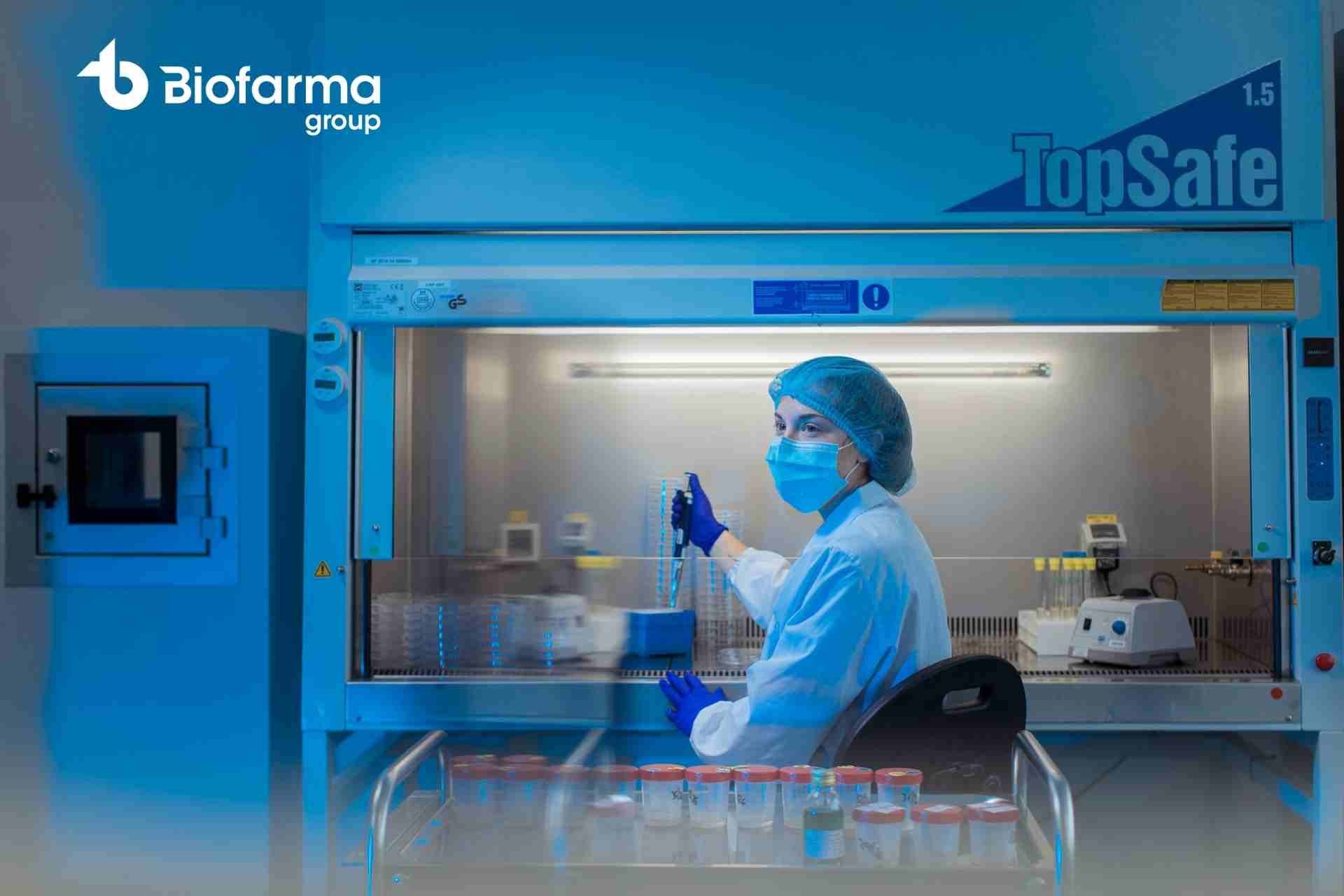In Biofarma Group, continuous innovation is synonymous with consistent quality. For this reason, the Group has always been on the lookout for new methods to guarantee the release of quality products in compliance with current regulations.
Indeed, the Group boasts a pioneering Quality Control laboratory that is constantly engaged in research. Among its achievements, an innovative method developed for probiotic counting stands out in particular.
A team of researchers guided by Emanuele Nencioni, QC Manager of Biofarma Group, have in fact carried out a study on the search for bacterial probiotics, using a new method: flow cytometry.
In the pharmaceutical field in particular, being able to quantify the number of viable probiotics within a heterogeneous population is crucial as it allows to understand the level of efficacy of a product on the human organism.
Indeed, a key characteristic of probiotics is that they must be metabolically active in order to proliferate and exert their beneficial effects within the small intestine and colon. The active state, however, cannot be detected by a traditional measurement method, as the latter only provides information on the microbiotic growth and duplication capacity of microorganisms in vitro. Damaged and quiescent cells, on the other hand, cannot be detected correctly and this can lead to quantification errors.
The solution to this measurement problem is flow cytometry. This is a technique for analysing, quantifying and separating cells or microparticles. In the specific case of probiotics, it is able to measure their viability and efficiency by analysing their metabolic activity, fermentation capacity, acidification potential and oxygen uptake capacity.
The cytofluorimetric technique involves several steps. First, it starts with a sample of cells that is suspended in a fluid and treated with specific dyes (fluorochrome) capable of distinguishing cell subtypes. The sample is then inserted into the instrument called cytofluorimeter, it is channelled into the flow chamber and, subsequently, through a very narrow hole, the cells continue in an orderly manner inside the tube. The flow, therefore, is intercepted by different detectors that analyse all the cells inside at high speed, identifying their key characteristics such as, for example, the size or cell complexity. Finally, the signal intercepted by the various detectors is amplified and sent to the computer, which converts the result into a digital file, usually in the form of graphs.
The advantages of cytofluorimetric technology for probiotic counting: the Biofarma Group study
Biofarma Group conducted a study to assess the benefits of using this analytical method. Specifically, the researchers’ objective was to apply ICH parameters, normally used for the analysis of drugs and chemical compounds, to probiotic products, thus comparing the classical method with the new viability test.
Almost all statistical values confirmed equivalent efficacy between the two compared methods. The results obtained from finished products and reconstituted samples indicated a good correlation between plate count and flow cytometry; moreover, the data for the latter seemed to be replicable with greater precision and robustness.
Considering all the results, the optimisation and validation of the flow cytometry technique in compliance with the ICH recommendations has laid the foundation for the application of the chemical-pharmaceutical rules also in probiotic counting, as it makes it possible to identify viable and non-viable cells and provides additional information on their physiological state and metabolic activity.
This technique also has further advantages: in addition to lower costs, a significant reduction in analysis time has been observed, i.e. 2 hours compared to the 3 days required by the traditional method, as well as the fact that it is possible to analyse and quantify thousands of active cells even in a very small sample.
Finally, the application of a chemical-pharmaceutical validation approach, using ICH on viable probiotics, ensures greater and more robust quality control than the routinely used method.


















